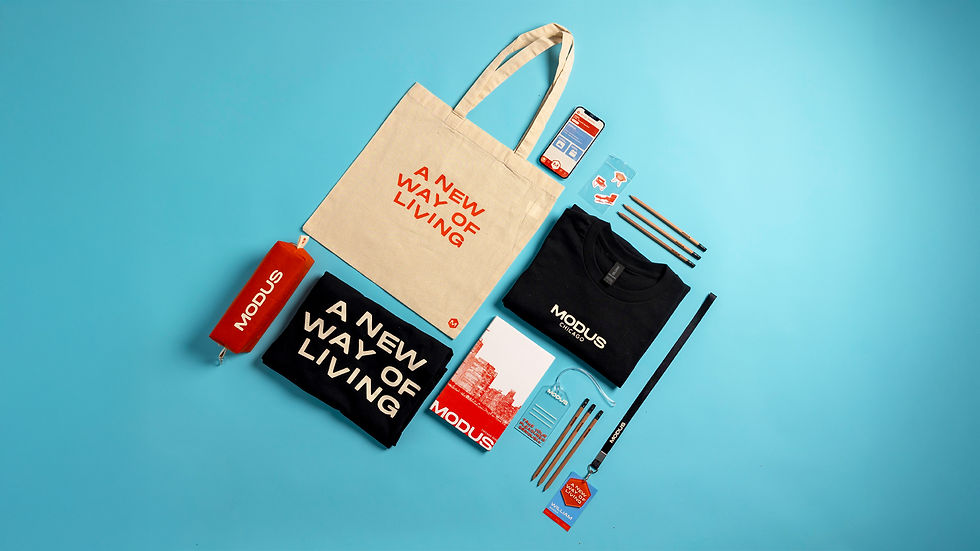top of page
Modus
ROLE
App Designer
Type Specialist
SKILLS
UI/UX
Typography
Ideation
AUDIENCE
High School Students
TIMELINE
6 Weeks
TOOLS
Figma
Photoshop
Indesign

Contribution
My central role for this project was to design the app experience and integration for this experience. From the concept to the designing of an app prototype using Figma. I also served as the Type specialist—carefully reading over all bodies of text for spelling and making adjustments to kerning and tracking as well as conducting the typesetting stage and process for the book. Other minor contributions included creation of the pencils, mockups, and contributing to the ideation stage of project.
Deliverables
Book | App | Touchpoints | Mockups
Collaborators
Student Silver ADDY Award
BRIEF + OPPORTUNITY
I was tasked with working in a team to create a Published Artifact that thoughtfully incorporated the contributions of historical designers from specific eras. This artifact was designed to serve as the centerpiece of a broader conceptual vision, shaped by a unified strategy and executed through team collaboration and consensus.
The project placed a strong emphasis on the quality, precision, and skillful execution of page design, layout, and typesetting. The final deliverable required the artifact to be presented in both print and PDF formats, complemented by additional touchpoints, tangible elements, mockups, and thorough documentation.
RESEARCH + DIRECTION
Our team was tasked with exploring Mid-Century Modernism, a transformative era of innovation and user-centered design that seamlessly united form, function, and play. This period emphasized reductionism, and a universal design language that invited personal interaction and discovery. Drawing from these principles, we set out to create a program tailored to aspiring designers.


Through extensive ideation, we centered on empowering high school students to cultivate their design-thinking skills in an environment of collaboration, exploration, and hands-on learning. This vision was anchored by our guiding question:
"How might we empower students interested in design to establish their design-thinking skills in a collaborative and immersive learning environment?"
CONCEPT + EXECUTION
The result was MODUS, a summer program crafted to inspire and engage high school students passionate about design. Partnering with top design institutions, MODUS invites 30 exceptional college mentors to guide students through a curated series of workshops, excursions, and collaborative challenges.

At the heart of this program lies the guidebook, an exquisitely designed artifact that serves as a tactile and visual compass throughout their MODUS journey. Accompanied by thoughtfully designed touchpoints, such as tote bags and supplementary materials, the program’s philosophy embodies the goals of Mid-Century Modernism—dynamic, functional, and human-centered.
AUDIENCE
Every element of MODUS was meticulously crafted with the user in mind. From the physical artifacts to the digital app, the program reflects an unwavering commitment to creating an intuitive, immersive, and transformative experience for the designers of tomorrow. MODUS is more than a program; it’s a journey that equips students with the tools, confidence, and inspiration to pursue design as a way of life.


The App
THE APP
The integration of the app was designed with the students' needs and behaviors at the forefront. We recognized that entering an unfamiliar environment could be overwhelming, and their smartphones serve as a natural touchstone of comfort and familiarity. By bringing the entire MODUS experience into their pockets, we ensured that students have seamless access to every resource they need, directly on a device they trust.



APP FEATURES

THE DIGITAL GUIDEBOOK
The app acts as an essential extension of the physical guidebook, enhancing and complementing the MODUS experience. It features an elegantly streamlined version of the guidebook’s content, ensuring critical information is always accessible.



THE DIGITAL GUIDEBOOK
Within the app is an abbreviated version of the guidebook. This book includes summarized portions of the text for students to read quickly or while on the go. With a user friendly user interface, the book was designed for students to navigate easily, with each prtion of the book being divided the same way as it is in their physical copy.
THE APP
An app-exclusive section was thoughtfully curated, offering students a rich collection of resources, such as podcasts, films, and design tools, allowing them to stay immersed in creativity and inspiration during their journey. This feature encourages students to explore design in moments between structured activities, such as during transit from one location to another.



THE APP
Interactive maps were included to provide real-time navigation of all MODUS locations, ensuring students feel confident and oriented throughout the program. A personalized profile section empowers students to share details such as their name, group, and lodging, while also securely storing saved resources and providing 24/7 access to emergency contacts. Their current location is displayed within the app, with an option to share it, reinforcing a sense of safety and connectivity.

THE APP
The app also introduces dynamic interactivity through QR code integration. Scanning these codes within the guidebook unlocks engaging and educational activities focused on Mid-Century Modern design principles. These moments of discovery—whether exploring playful exercises or uncovering design insights—serve to deepen students’ understanding of the philosophies behind the MODUS program, turning even the most routine moments, such as bus rides, into opportunities for creativity and growth.
FINAL DESIGN













bottom of page




